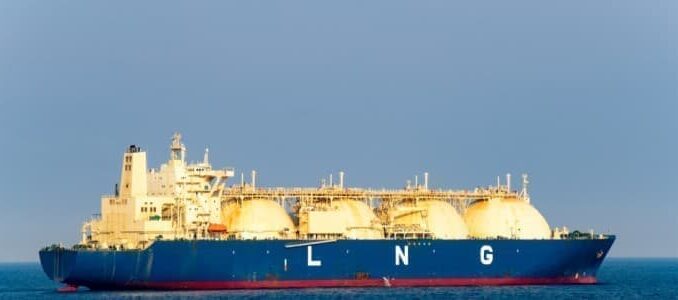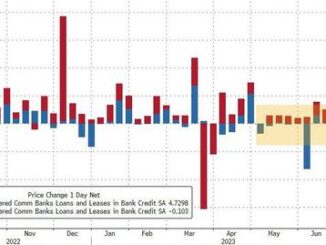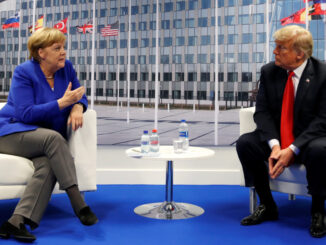
- Driven by fears that Russia may cut supply to Europe, the EU imported more LNG from the U.S. than pipeline gas from Russia for the first time ever.
- This insatiable thirst for natural gas has driven prices so high that developing nations can no longer afford the vital commodity.
- While Europe’s LNG imports have soared by 49% since the start of the year, Pakistan’s imports have fallen by 15% and the country is now suffering blackouts.
In June, the European Union imported more liquefied natural gas from the United States than pipeline gas from Russia for the first time ever.
The unprecedented shift came as the EU scrambled to fill up its gas storage facilities ahead of the next heating season in fear Russia could turn off the gas tap at any moment. It also pushed LNG prices sky-high, making it unaffordable for developing countries.
“Because of the Ukraine war, every single molecule that was available in our region has been purchased by Europe, because they’re trying to reduce their dependence on Russia,” Pakistan’s Petroleum Minister Musadik Malik said earlier this month as quoted by the Wall Street Journal.
Pakistan has been suffering from blackouts because of insufficient LNG supplies that the country needs to keep its power plants going. And the reason for the insufficient supplies is that Europe can pay more for the commodity, so traders are sending their cargos there, including cargos originally destined for Pakistan and other Asian countries.
According to data from Wood Mackenzie cited by the Wall Street Journal, while Europe’s LNG imports soared 49 percent from the start of the year to mid-June, Pakistan’s imports fell by 15 percent during the same period, those to India shed 16 percent, and China’s LNG imports fell by more than a fifth.
“The European gas crisis is sucking the world dry of LNG,” Valery Chow, head of Asia Pacific gas and LNG research at Wood Mackenzie, told the WSJ. “Emerging markets in Asia have borne the brunt of this and there is no end in sight.”
Not everyone seems to be quite so pessimistic. Reuters reported in late June that demand for LNG from Asia is on the rebound, with one analyst forecasting a decline in European Union LNG imports over the second half of the year.
“There has been a growing imbalance between Asia and Europe, with European stocks growing at the expense of Asian inventories,” Reuters quoted Capra Energy managing director Tamir Druz as saying.
“We expect LNG imports for the EU, Turkey and the UK over the second half of 2022 to be lower than what we’ve seen in the first six months, with a drop of about 16%, or 10 million tonnes,” Druz added.
“Asia is already in preparation for winter, with LNG vessels being snapped up on multi-month charters, as charterers fear being caught without shipping capacity during crunch months,” said another analyst, Kaushal Ramesh from Rystad Energy.
That might be the case, but Pakistan last week failed to attract any bids in a $1-billion tender for liquefied natural gas, the WSJ noted in its report, and India has turned to more coal-fired generation to keep the lights on. In Bangladesh, like in Pakistan, blackouts have had to be enforced.
In June, the European Union imported more liquefied natural gas from the United States than pipeline gas from Russia for the first time ever.
The unprecedented shift came as the EU scrambled to fill up its gas storage facilities ahead of the next heating season in fear Russia could turn off the gas tap at any moment. It also pushed LNG prices sky-high, making it unaffordable for developing countries.
“Because of the Ukraine war, every single molecule that was available in our region has been purchased by Europe, because they’re trying to reduce their dependence on Russia,” Pakistan’s Petroleum Minister Musadik Malik said earlier this month as quoted by the Wall Street Journal.
Pakistan has been suffering from blackouts because of insufficient LNG supplies that the country needs to keep its power plants going. And the reason for the insufficient supplies is that Europe can pay more for the commodity, so traders are sending their cargos there, including cargos originally destined for Pakistan and other Asian countries.
According to data from Wood Mackenzie cited by the Wall Street Journal, while Europe’s LNG imports soared 49 percent from the start of the year to mid-June, Pakistan’s imports fell by 15 percent during the same period, those to India shed 16 percent, and China’s LNG imports fell by more than a fifth.
“The European gas crisis is sucking the world dry of LNG,” Valery Chow, head of Asia Pacific gas and LNG research at Wood Mackenzie, told the WSJ. “Emerging markets in Asia have borne the brunt of this and there is no end in sight.”
Not everyone seems to be quite so pessimistic. Reuters reported in late June that demand for LNG from Asia is on the rebound, with one analyst forecasting a decline in European Union LNG imports over the second half of the year.
“There has been a growing imbalance between Asia and Europe, with European stocks growing at the expense of Asian inventories,” Reuters quoted Capra Energy managing director Tamir Druz as saying.
“We expect LNG imports for the EU, Turkey and the UK over the second half of 2022 to be lower than what we’ve seen in the first six months, with a drop of about 16%, or 10 million tonnes,” Druz added.
“Asia is already in preparation for winter, with LNG vessels being snapped up on multi-month charters, as charterers fear being caught without shipping capacity during crunch months,” said another analyst, Kaushal Ramesh from Rystad Energy.
That might be the case, but Pakistan last week failed to attract any bids in a $1-billion tender for liquefied natural gas, the WSJ noted in its report, and India has turned to more coal-fired generation to keep the lights on. In Bangladesh, like in Pakistan, blackouts have had to be enforced.
Source: Oilprice.com



